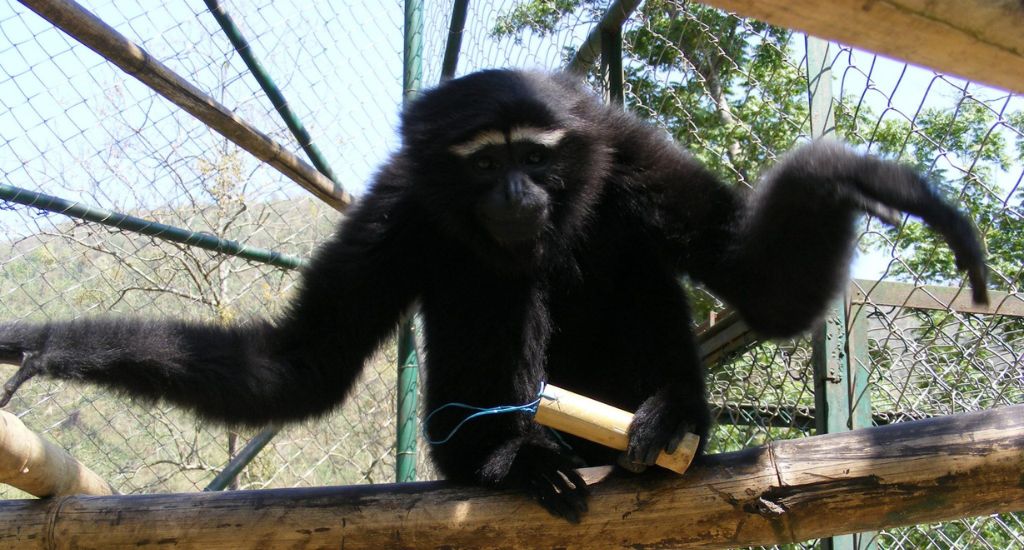Betsida Marak, the manager of the world’s largest gibbon rescue initiative at the Sonja Wildlife Rescue Centre in Meghalaya’s Garo hills, is committed to protecting the western hoolock gibbons. It is a species of primates found in its highest density in this region, with about 500 of them at last count.
The rescue centre, which was started in 2009 by Florian Magne, a French conservationist, caters to 10 hoolock gibbons that have been rescued from either poaching, domestication or injury.
The vulnerable hoolock gibbons…
The western hoolock gibbons is a primate that is called Huro in the local language in Meghalaya. They mostly reside in the trees, barely coming to the ground. They communicate by calling out in a high-pitched tone that echoes through the trees.
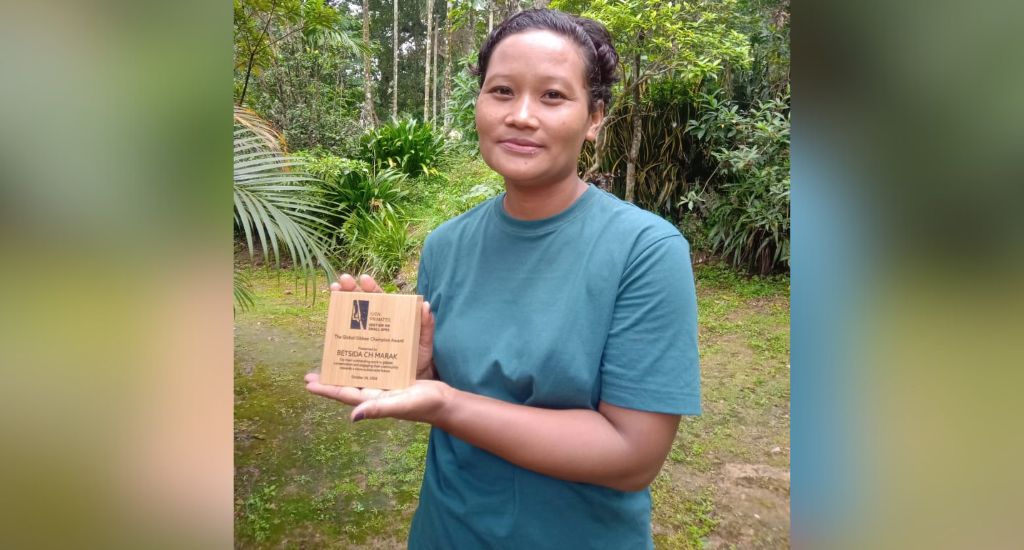
Male gibbons are black in colour while the females are copper tan. However, decreasing forest cover poses a threat to their natural habitat and the community perceives their endangered status as a bad omen.
According to Marak, who is also from the Garo community, the gibbons are an integral part of the community and co-exist with the people.
Our forefathers have been ensuring that no harm comes to the gibbons for a long time. In our culture, any harm to the hoolock gibbons portends bad luck. We believe that conserving them brings prosperity to our village.
said Marak.
Lady with a mission
Every day Marak travels for over an hour from Tura, the district headquarters of Garo Hills, to the village of Silsotchigre. She reaches the rescue center and oversees its operations till 9 am, after which she moonlights as a principal of the Sonja Wildlife Conservation Medium English school.
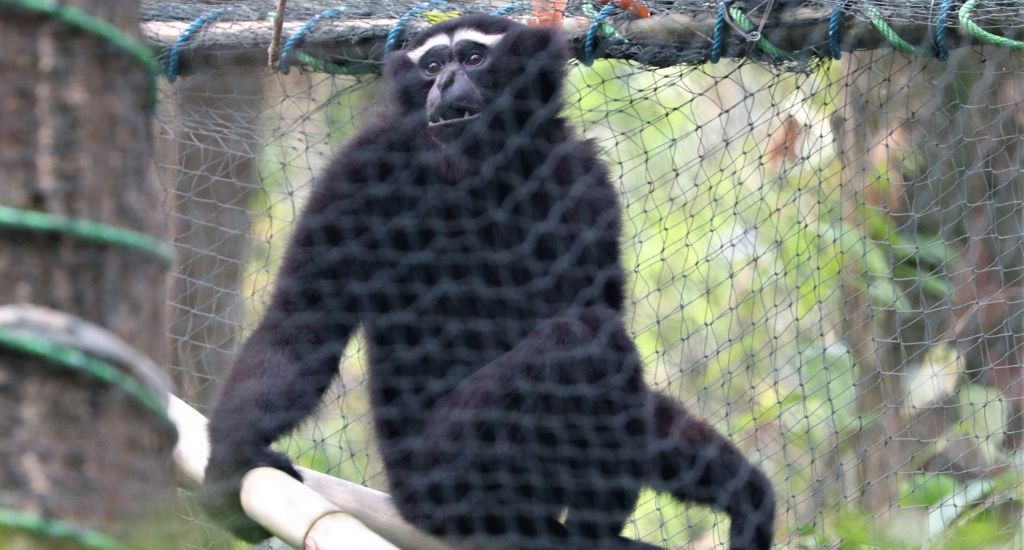
The school is part of the Huro programme, funding everything from the kids’ books, school bags, and other costs associated with studies. It provides free education to 149 students from nearby villages who belong to underprivileged families and do not have the resources to get educated.
The school has classes from nursery to grade five, and the medium of instruction is English. The children at the school frequently encounter wildlife as they walk several kilometres to get to class.
“We try to instill in them early on that they should protect animals and nature. Gibbons never attack humans unless you attack them first. We ask the kids not to cut trees, like the mandarin orange trees found exclusively in the Garo Hills. Or nature’s bounty as we know it today may cease to exist,” pointed out Marak.
Precisely why ‘Wildlife Conservation’ is one of the subjects taught in the school. “We educate them to protect wildlife and nature. We also tap into the Garo culture, which has been practicing conservation for ages. We remind them of our unique tales such as those about Bigfoot, called the mande burung,” remarked Marak.
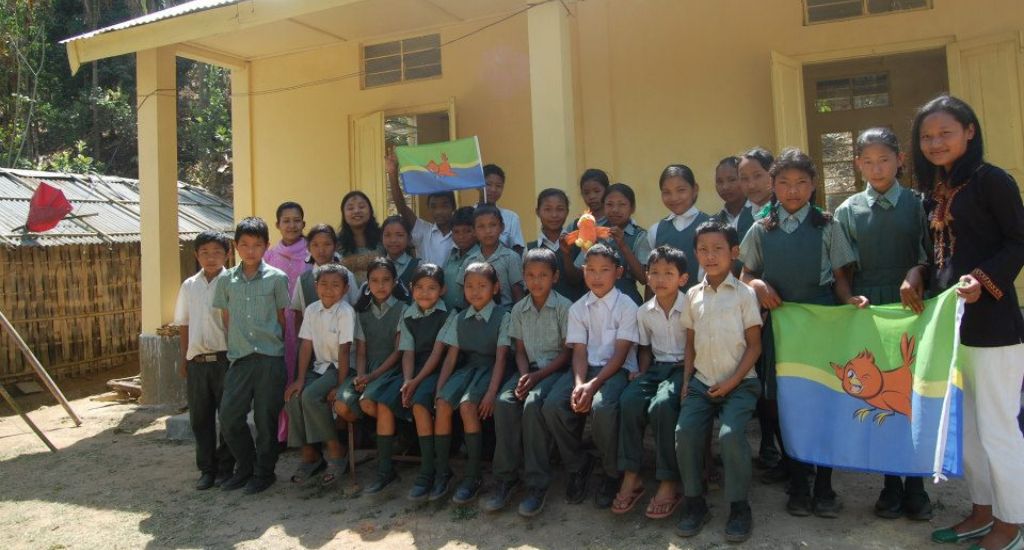
Her efforts haven’t gone unnoticed. She was awarded the Global Gibbon Champion Award 2024, presented by the International Union for Conservation of Nature (IUCN) for her outstanding contributions to gibbon conservation at the Sonja Wildlife Rescue Centre.
“The award has taken me by surprise. We are really fortunate to have been presented this award for the conservation of this rare species,” said Marak to Village Square.
The long-drawn rehabilitation journey
Marak’s association with the Huro programme began in 2009, when the rescue center opened. She was chosen to teach at the school run by the programme. In 2018 she was recruited to work as a staff at the rescue center.
“The scientists and volunteers at the Huro programme wanted someone who could communicate with the staff and the director because many people couldn’t converse in English,” pointed out Marak. In 2020, she was promoted and made the manager at the rescue center.
The rescue center has a quarantine centre, a small veterinary clinic, and several aviaries housing the primates. Marak works with the volunteers at the rescue centre to rescue and rehabilitate the gibbons back into the wild. The process takes seven to 10 years and demands a lot of patience.
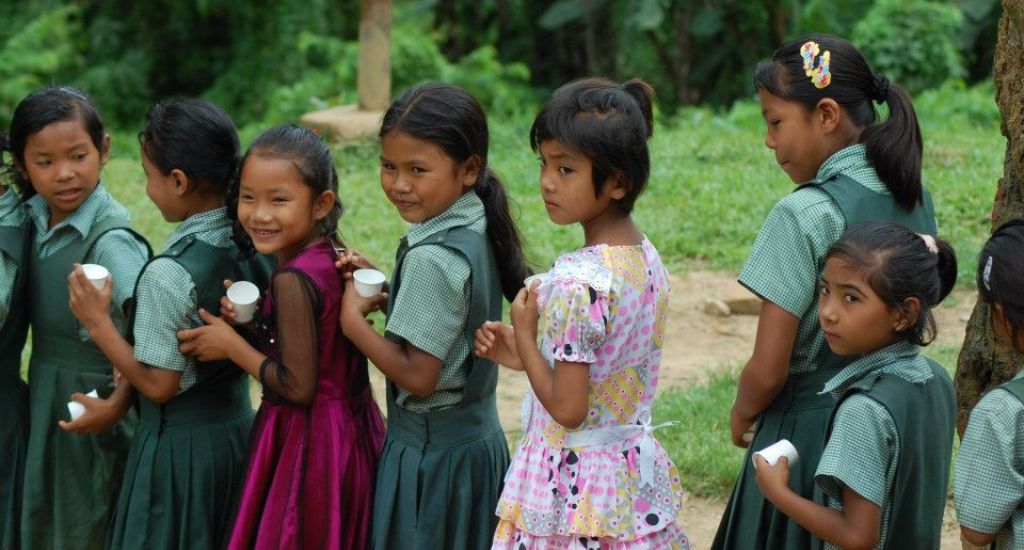
The team follows international guidelines that require adhering to several criteria of physical and mental well-being before the hoolock gibbons can be released back into the wild.
Once the gibbons are domesticated, everything changes for these animals and rewilding them can be a long process. But Marak’s perseverance and her team’s support is saving the species one primate at a time.
The lead image on top depicts a Western hoolock gibbon primate at the Sonja Wildlife Rescue Centre. (Photo courtesy of the Huro Programme)
Aatreyee Dhar is an independent journalist based out of Assam.

